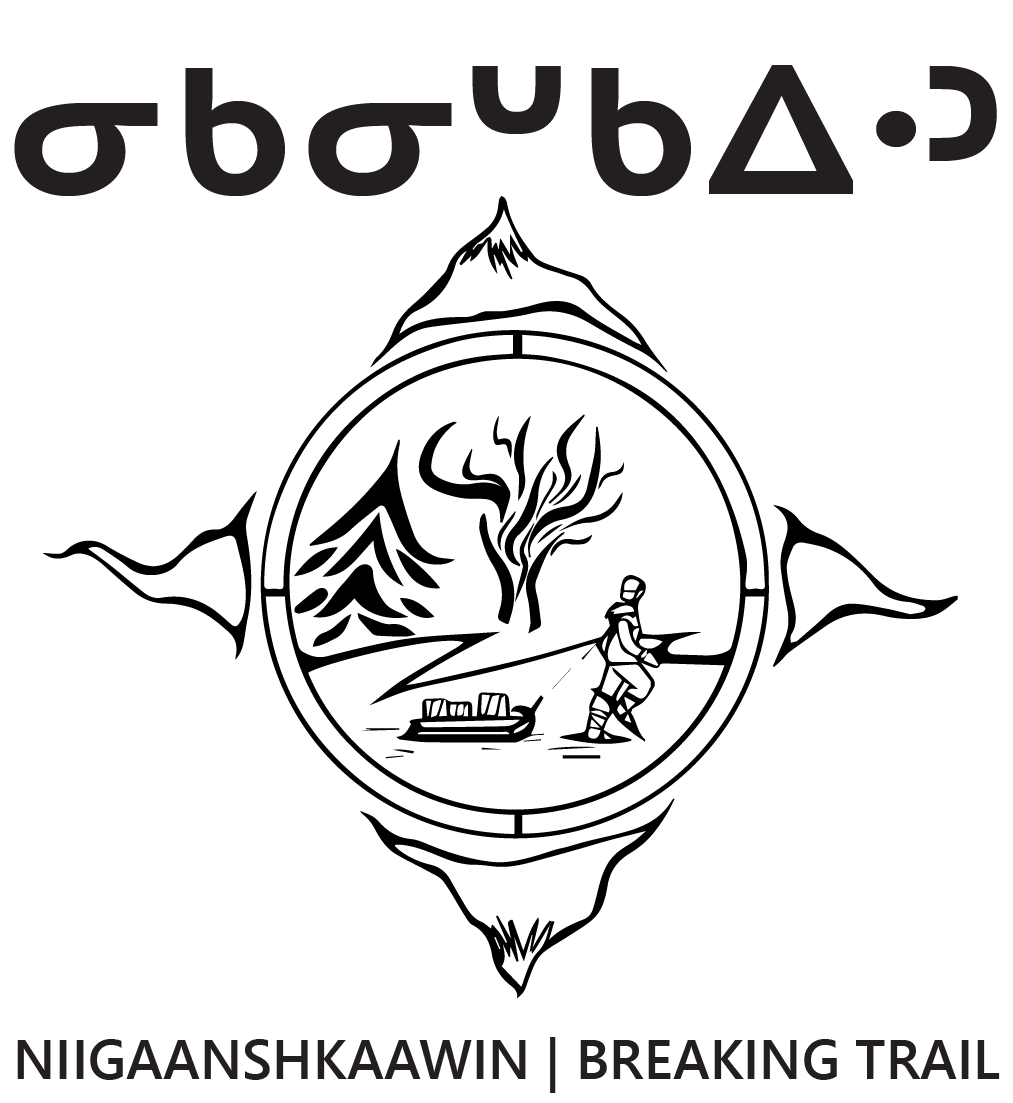
About Niigaanshkaawin
What is Niigaanshkaawin?
Niigaanshkaawin, which means “walking ahead or first to walk ahead” aptly describes the goal to have Tikinagan Child and Family Services break trail on a new, proactive path to support and integrate Band Representative programs and First Nation law making. A resolution was passed at the 2021 Annual Chiefs’ Assembly to form a new Chiefs Committee to oversee a process to determine the role of the agency in the future with wide-ranging changes in the child welfare landscape.
“We chose the name Niigaanshkaawin because Tikinagan has always led the way,” explained Tikinagan Executive Director Thelma Morris. “I have always said we are two-steps ahead of everyone in Ontario. This can be the base for child welfare laws in Ontario. My dream is for each First Nation to have their own child welfare laws.”
The new Tikinagan Chiefs Committee will consult with community members and leaders to determine the specific role communities want the agency to fill. These consultations will allow Tikinagan to prepare to support in whatever way each community sees fit.
Our Vision | Our Values | Our Outcome
Vision
To see each First Nation determine their path for child and family services.
Mission
To support our First Nations in the development and implementation of First Nation representation programs and First Nation child welfare laws.
Outcome
To reimagine the role Tikinagan will have in supporting our First Nations' child and family services.
Why Niigaanshkaawin?
On June 21, 2019, the federal government passed Bill C-92, An Act Respecting First Nations, Inuit and Métis Children, Youth and Families. This legislation has the goal of keeping Indigenous children and youth connected to their families, communities and culture. This bill will transition Tikinagan’s role in some communities from a position of child welfare leadership to a more supportive role in developing and enacting their own child welfare laws that align with their community’s culture and history.
“Over 30 years prior to this legislation and the Truth and Reconciliation Calls to Action, Chiefs in our communities dreamt of having a child and family services agency that would deliver services respectful of the culture and customs of the Indigenous people. With the development of Mamow service model in the last 20 years or so, we at Tikinagan have been able to work alongside First Nations to practice their inherent rights in making key decisions around care and provision of services to families in child welfare service.”
Nishnawbe-Aski Nation (NAN) Deputy Grand Chief Bobby Narcisse echoed these ideals in his address, encouraging the Chiefs and Delegates that everyone needs to work together when it comes to raising our children.
“We are here to support our families in regards to child welfare,” he said. “We encourage our First Nation communities to work with Tikinagan to ensure we maximize the resources at our community level.”
After more than 15 years working in child welfare, NAN Deputy Grand Chief Victor Linklater said one of his biggest passions has always been putting children at the centre of the work being done by agencies like Tikinagan.
“I encourage leadership in our communities: let’s work together, let’s protect children, rebuild our families and have strong communities,” said Linklater.
The Act respecting First Nations, Inuit and Métis children, youth and families
About the act
Co-developed with Indigenous, provincial and territorial partners, the act:
affirms the rights of First Nations, Inuit and Métis peoples to exercise jurisdiction over child and family services
establishes national principles such as the best interests of the child, cultural continuity and substantive equality
contributes to the implementation of the United Nations Declaration on the Rights of Indigenous Peoples
provides an opportunity for Indigenous peoples to choose their own solutions for their children and families
On June 21, 2019, the Act respecting First Nations, Inuit and Métis children, youth and families became an official law, and on January 1, 2020, its provisions came into force.
Indigenous groups who wish to do so can design and deliver child and family services solutions that best suit their needs. Just as the act was co-developed with our partners, we will continue to work with them through the transition and implementation phases of the act.
As of January 1, 2020:
Indigenous groups who have developed their own legislation will have 2 options to exercise jurisdiction under the act.
Every service provider delivering child and family services to Indigenous children and families will need to follow the minimum standards found in the act.
Existing agencies will continue to provide services to Indigenous children.
Agreements related to existing delegated agencies will remain valid unless the parties decide otherwise.
If Indigenous groups are currently at discussion tables to conclude agreements, they can still exercise jurisdiction under the framework of the act.
Indigenous groups that choose to exercise their jurisdiction could continue working with delegated agencies or could create their own delivery service models.
The act provides that agreements such as treaties and self-government agreements in relation to child and family services between Indigenous groups and federal, provincial, or territorial governments that predate the coming-into-force of the act prevail in case of conflict.
To facilitate the work of those providing child and family services, information will be posted on the Indigenous Services Canada (ISC) website related to notices of intent, coordination agreements and Indigenous laws as they are made available: Notices and requests related to An Act respecting First Nations, Inuit and Métis children, youth and families.


